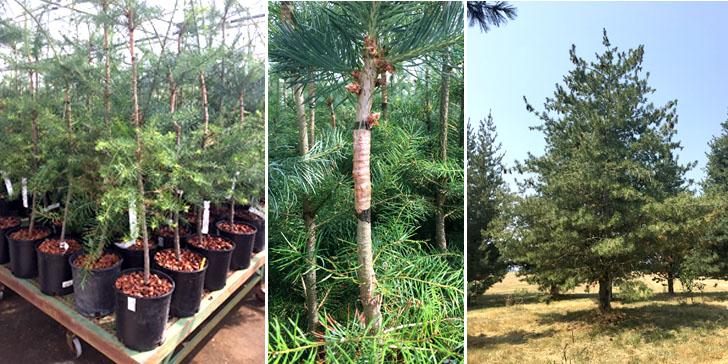

Thanks to my friends at the Bureau of Land Management, I recently had the opportunity to tour the Walter H. Horning Tree Seed Orchard near Colton. This 600-acre seed orchard is managed by the BLM, but also produces seed for several timber companies, the U.S. Forest Service and even a couple Christmas-tree growers.
When we first started planting seedlings in the 1940s and ’50s to reforest areas in Oregon that had been logged or burned in wildfires, foresters collected seeds from any tree in the forest. But they quickly observed that some trees grow much faster than others, even on similar sites, and came up with the idea of growing seedlings using seeds from only the best trees.
Modern tree-breeding programs and the use of seed orchards to produce improved seed were the next steps. In the late 1960s, foresters started collecting cuttings from the best trees in the forest and growing these to produce seed in an agricultural environment.
The Horning Seed Orchard was started in 1968. Together with the BLM’s Tyrell Seed Orchard near Eugene and the Oregon Department of Forestry’s Schroeder Seed Orchard near St. Paul, it produces most of the conifer seed used in Oregon. The majority of the seed produced at Horning is western Oregon Douglas-fir. Seeds from other species produced there include sugar pine, western white pine, noble fir, western hemlock and western redcedar.
The seed production process is very interesting, and very detailed. Cuttings are made from branch tips in the upper crowns of the selected parent trees. These cuttings are then grafted onto root stock, which has been specifically selected for grafting success. The resulting “graftlings” are grown in a greenhouse in pots until the grafts are healed and the young trees can grow in the orchard.
The graftlings are then planted outside in the seed orchard. Once the trees are well established, they are periodically stressed by partial girdling, root pruning and plant-hormone injections, to get them to produce seed as early as possible. Seed-orchard Douglas-firs can produce significant amounts of seed by age 15. Woods-grown Douglas-firs don’t produce much seed until age 40 or so.
The cones are then collected by hand using lift trucks when they are nearly mature, but before they open and cast their seed to the wind. Cones are stored in burlap bags and placed on drying racks in a rodent-proof drying house until they are dry enough for processing. Seed is extracted from the dry cones and stored in a freezer until it is needed to grow seedlings.
Seed at Horning is generally produced by open pollination, where the pollen comes from any and all of the trees in the block. In special cases, such as disease-resistant western white pine, controlled crosses are made where pollen is collected from certain trees and used to pollinate cones in other trees.
I want to point out that these improved trees are not genetically modified. They are produced using standard breeding techniques, where the healthiest and fastest-growing trees are used to produce future seed. Even with these fairly simple breeding techniques, genetic-gain verification trials have shown specially bred trees grow bigger in a faster amount of time, gaining 15 to 20 percent more wood volume at age 20 than those grown with woods-run seed.
So the next time you see a wonderful stand of conifer trees, remember to thank the BLM and ODF for the great work they do at their seed orchards, producing improved conifer seed to grow future forests that will provide us with wood products, wildlife habitat and scenic beauty, among other benefits.
For the forest,
Mike Cloughesy
Director of Forestry